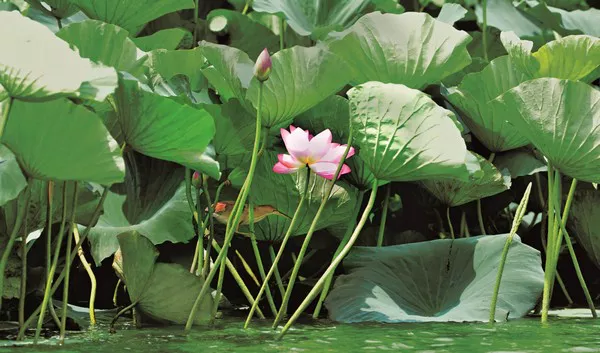Flowers, with their ephemeral beauty, can bring joy and vibrancy to any space. However, when flowers begin to wilt and fade, it doesn’t necessarily mark the end of their contribution to your decor.
Understanding the Beauty of Fading Flowers
Before delving into preservation methods, it’s essential to appreciate the unique beauty of fading flowers. As flowers age, their colors may change, and petals may take on delicate translucency. These subtle transformations can add a touch of nostalgia and grace to the floral arrangement. Observing the nuances of fading flowers provides inspiration for creative preservation techniques that celebrate the different stages of a flower’s life.
Choosing the Right Flowers for Preservation
Not all flowers respond equally to preservation methods, so choosing the right flowers is crucial for successful outcomes. Flowers with sturdy petals and low moisture content, such as roses, lavender, and baby’s breath, are often ideal candidates. Delicate flowers like orchids may require specialized preservation techniques. Consider the natural characteristics of the flowers you intend to preserve to determine the most suitable preservation method.
Air Drying Flowers
Air drying is one of the oldest and simplest methods of preserving flowers. To air dry flowers, gather a small bunch of blooms, remove excess foliage, and secure them with a rubber band. Hang the bunch upside down in a dark, dry, and well-ventilated space. The darkness helps retain the flower’s color, while adequate ventilation prevents mold growth. After several weeks, the flowers will be thoroughly dried and ready for various creative uses.
Silica Gel Drying
Silica gel is a desiccant that absorbs moisture and preserves flowers with minimal loss of color and form. Place the flowers in a container filled with silica gel, ensuring each flower is surrounded by the gel. Gently cover the flowers with more silica gel, and let them sit for several days. Silica gel allows for precise control over the drying process, making it suitable for delicate flowers that may not fare well with other methods.
Pressing Flowers
Pressing flowers is a classic preservation technique that results in flat, two-dimensional specimens. To press flowers, arrange them between layers of absorbent paper, such as blotting paper or newspaper. Place heavy books or flower presses on top, applying consistent pressure. After a few weeks, the flowers will be fully pressed and can be used for creating botanical art, greeting cards, or framed displays.
Microwave Drying
Microwave drying is a quick and efficient method for preserving flowers while maintaining their vibrant colors. Place the flowers between layers of paper in a microwave-safe container, ensuring they are not touching. Microwave the flowers in short bursts at low heat, allowing them to cool between sessions. This method is particularly suitable for flowers with a high moisture content, such as daisies and chrysanthemums.
Using a Flower Press
A flower press is a specialized tool designed for efficiently pressing and preserving flowers. These presses typically consist of wooden or metal frames with layers of absorbent paper. Arrange the flowers between the paper layers, tighten the press, and leave it for a few weeks. Flower presses are convenient for preserving multiple flowers simultaneously and are a valuable tool for botanical enthusiasts and artists.
Wax Dipping
Wax dipping is a preservation technique that creates a protective coating around the flowers, maintaining their shape and color. Melt paraffin or beeswax in a heat-safe container, and dip each flower into the melted wax, ensuring complete coverage. Gently shake off excess wax and allow the flowers to dry. Wax-dipped flowers can be displayed in vases or used in various crafting projects.
Creating Floral Arrangements
Preserved flowers offer a unique and timeless charm that can be incorporated into various floral arrangements. Combine dried flowers, pressed blooms, and wax-dipped specimens to create eclectic bouquets or centerpieces. Experiment with different textures, colors, and shapes to design arrangements that reflect your personal style. Preserved flowers also work well in dried wreaths and everlasting botanical displays.
Designing Framed Floral Art
Showcase the beauty of preserved flowers by incorporating them into framed floral art. Arrange pressed or dried flowers on acid-free paper within a shadow box or frame, creating a visually captivating display. This method allows you to capture the intricate details of each flower and transform them into elegant and lasting pieces of botanical art.
Crafting Resin Keepsakes
Preserve flowers in a clear resin to create stunning and enduring keepsakes. Arrange dried or pressed flowers in a silicone mold, pour resin over them, and allow it to cure. The result is a glossy, three-dimensional piece that encapsulates the beauty of the flowers. Resin-preserved flowers can be used to make jewelry, paperweights, or decorative items.
Maintaining Preserved Flowers
While preserved flowers do not require water or sunlight, they benefit from proper care to ensure their longevity. Keep them away from high humidity and direct sunlight to prevent color fading or potential damage. If they accumulate dust, use a soft paintbrush or a can of compressed air to gently remove it. Store your preserved flowers in a dry, cool place when not in use to protect them from environmental factors.
Conclusion
Preserving dead flowers offers a creative and sustainable way to enjoy the enduring beauty of blooms that have graced your space. Whether you choose to air dry, press, wax dip, or create intricate arrangements, the preservation methods outlined in this guide provide a myriad of options to suit your preferences and artistic inclinations. Embrace the art of flower preservation, and transform fading blossoms into timeless expressions of nature’s beauty. With a bit of creativity and thoughtful preservation, your cherished flowers can continue to bring joy and elegance to your life for years to come.


